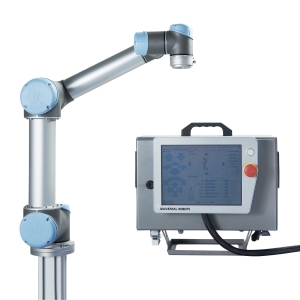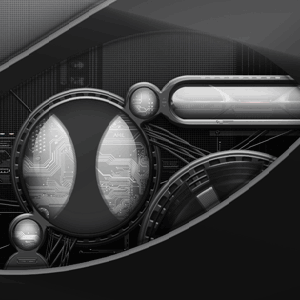What we do
OPTIMIZING YOUR MANUFACTURING
You know which improvement potential you need a solution for but you don't know the best way to solve it yet? You don't have the knowledge for production analysis and improvement or you just don't know where and what to start with? You grew too fast and now you need to control the costs? You need to grow without increasing production costs? Just contact us as we can support your with resources on demand and operations analysis to help you to bring your production to the next level. We are basically a fresh pair of eyes coming to your factory to understand your manufacturing. On the way of understanding we have a lot of question to clear things and very often it will raise the question why do you actually do it? And you will find that very often there no reasons or reasons which are not valid anymore and things are done because it was always done like that. This is absolutely normal and found everywhere because manufacturing is a very challenging job and you there are so many things to look after that some things just happens automatically mostly on setting up or ramping up production. Normally the analysis and tackling of these topics comes when you find out that your manufacturing costs are higher than they are supposed to be. This is where we support you on bringing the costs back to the highly profitable level. A method used to do so is the usage of lean concepts. Lean concepts is simply described getting rid of everything you actually don’t need to make your product come out of your factory with the quality and quantity you need to satisfy your customer demands. Sometimes it is functions in your products which are actually not needed anymore or it can be a quality inspection which can be canceled by stabilizing the process or doing automatic process control instead of after process inspection. It can be cancelling the investment (costs) for a new factory by optimizing the layout of the existing one or increase production space through storage space reduction from reducing your process and total cycle times. There are so many ways to optimize your production with lean concepts and save costs that the path of understanding your production automatically raises the questions which answer can save you a lot of money. Another example of used methods is bottle neck analysis, material flow optimization and line balancing. It simply means which is your slowest process in your production which limits your production capacity, why is it the slowest process and what can be done to make it faster. Bottle neck analysis follows a simple principle of production optimization: Find the slowest process, improve it to not being the bottle neck anymore and then tackle the next bottle neck. By this you constantly reducing your production cycle time and increase your capacity. When you continuously progress this you actually do what is called line balancing. Line balancing means your production line is in balance means your process cycle times are balanced. Line balancing has the advantage that you don’t need big material buffers in front of machines or processes, your total cycle time from start to end of manufacturing a product reduces and you can support your customer with shorter lead times, you increase your flexibility and you save costs. Together with line balancing another method is very helpful and the impact is usually underestimated, material flow optimization. Material flow optimization is one of the easiest methods to understand but at the same time it is often overlooked. As a simple example to see whether you could save money on these you could do two exercises. • Count your operator in production and see how much of there time or even how many people are busy with moving material from one place to another. You might be surprised how many operator actually do transport instead of product value adding. |
• Print out your factory layout, take a pen and follow your product by drawing on the layout the path it makes through your production from raw material incoming to finished product outgoing. Now calculate how many meters your product actually travels through your production. You might be surprised about the result.
These were just two examples on how easy it can be to spot cost root causes in your manufacturing and the good news is that it is usually also very easy to change this and reduce your costs, increase your quality, increase your flexibility and shorten your delivery time to your customers. Sometimes it is just about changing your layout to make the material flow better through your production. Other optimization potentials are more process related and are usually related to efficiency increase. Efficiency increase simply means achieve the same result with less effort. The best efficiency increase is just stop doing work you actually don’t need and do the value adding work instead. Efficiency increase is in reality harder to recognize so methods in use here are for example quality improvement, root cause analysis and a continuous improvement process. The interesting part in quality improvement is that it is usually associated with adding costs but in fact it is saving a lot of money when done right. Quality Improvement doesn’t mean add more inspection and only let the perfect parts go through. This in fact is the one which is actually one of the biggest manufacturing costs driver. The right way of quality improvement is to improve your process quality. When your process quality is on a high level you don’t need inspection which costs you money, you don’t need to sort out products which costs you raw material and for sure you don’t need reworking process in your manufacturing which are one of the most underestimated costs drivers. How many processes in your production are actually reworking your products to make a fail product become a good product? Probably more than you expect. The first step to quality improvement is the root cause analysis. Why are there actually bad products coming out of the process? This is what root cause analysis is all about. Also this goes deeper into details than expected. Do you know that your product design can actually make your production process unstable and therefore create a low yield process? Do you know that the root cause for a quality problem is sometimes hidden for ahead in the in the manufacturing flow than the process actually creating the fail part? Do you even consider that a not optimal specification for an incoming material can be the root cause which costs you a lot of money? Usually a low process quality comes from different impacts and therefore different root causes. The strategy to improve the quality and finding the root cause is typically the continuous improvement process. The continuous improvement process is using various tools like pareto analysis but to keep it simple to understand it means you take the top three or top five quality failures and you start with your root cause analysis on these. You implement your solutions and then you look again on the top five (or three) and analyze these. This is called continuous improvement process and is your path to a stable high quality process which reduces a lot of costs as you can skip inspections, you don’t have to do rework or you don’t have to throw parts away. The positive impact can have various faces. It can be the space you get because you don’t need rework stations anymore (or just less), your efficiency increases and you save money from buying less raw materials. Your quality inspection after the process is not needed anymore or can be reduced from 100% inspection to sample inspection so that your quality team can support other process improvements. You get more orders through increased quality or you simply save money from dealing with less quality complaints. We would like to offer you our help on these improvements to become your partner for improvement and growth. We would like to be |






